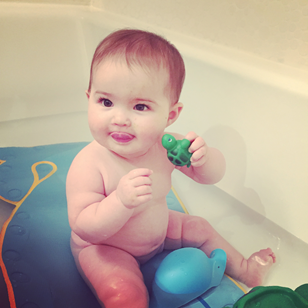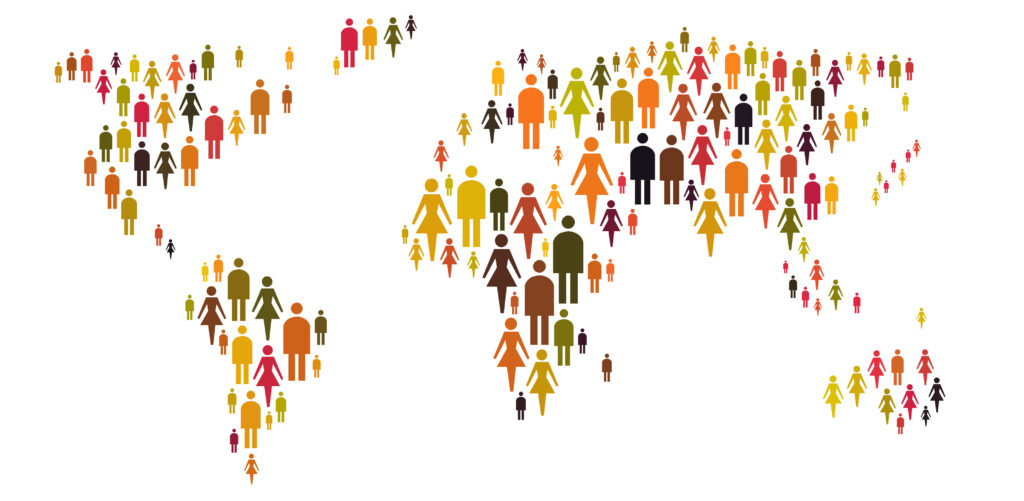How do mothers portray their babies’ bath time and bedtime through images in social media? This post compares imagery about certain baby routines in the US, Brazil and the UK, using social media imagery to explore mothers’ communicative behavior.
Social media is a common platform for interpersonal dialogue and social sharing about one’s daily life and activities. Outlets, such as Twitter, Facebook, and Instagram have become a favorite tool for mothers to communicate their experiences with their baby to their social network and the outside world. Images related to their baby’s daily routines are a key ingredient of mothers’ communicative behavior as they are frequently posted on social media. The Center for Self-Report Science at the Center for Economic and Social Research (CESR) conducted a project sponsored by Johnson & Johnson Consumer to examine common themes, needs, and approaches for baby bath time and baby bedtime in publicly available images posted by mothers on social media. We wanted to know which aspects of their baby’s daily routines mothers wanted to showcase and how they portrayed their interactions with their baby. Was the baby happy, playful, and relaxed? Did the image show the baby’s experience or the result of a mother’s task completed, such as the baby after bath time? Was the image focused on the baby, the mother, or the family? Importantly, we were interested in examining whether mothers from different regions varied in their social media posts and whether there were potential cross-cultural differences in mothers’ portrayal of their baby bath time and bedtime routines. It is possible that mothers differ in how they portray their experiences with their child to the outside world based on their cultural regions. Rather than examining mother’s verbal descriptions of baby bath and baby bedtime, we decided to focus on the imagery in their posts as a more subtle and observational methodology of mother’s communicative behavior.
For this purpose, we conducted a review of publicly available images on Instagram. Our searches focused on key words like “bath”, “bedtime”, “bathing” etc. Images of relevance needed to contain specific features in order to be included for further analysis: (1) Images needed to show the baby during bath time or bedtime; (2) images needed to clearly depict a close-up of one child; (3) in order to explore potential cross-cultural differences, images from three countries were selected for this project: the United Kingdom, Brazil, and the United States; (4) images could not contain multiple pictures of the same child; (5) the locational tag of the images needed to be available to ensure that the images could be mapped to the regions of interest. Three-hundred eleven images were included and systematically coded for various image and environmental characteristics as well as psychological attributes of the child and mother.

For baby bath time, we included 155 publicly available images. Out of those, 52 images (34%) were from the United Kingdom (UK), 50 (32%) from Brazil, and 53 (34%) from the United States (US). Overall, the images expressed many similarities between the three selected countries: in the majority of images the baby was the main focus of the image and mothers posted the process of baby bath time compared to the result of baby bath time. In other words, mothers mostly showed the baby during the bathing routine. Some interesting differences were found, however: babies in the US were significantly more likely to be shown in a happy mood during bath time compared to babies in Brazil and the UK. Images from Brazil were more likely to display bath products and less likely to display towels/linens compared to the US and the UK. Images from the US were more likely to display towels/linens compared to the other two countries. Finally, mothers from Brazil were more likely to show the baby in a baby bathtub and less likely to show the baby in a regular bathtub.
For baby bedtime, we included 156 publicly available images. Out of those, 52 images (33%) were from the United Kingdom (UK), 52 (33%) from Brazil, and 52 (33%) from the United States (US). As for baby bath time, the images expressed many similarities between the three selected countries: in the majority of images the baby was the main focus of the image and mothers posted the baby sleeping. In other words, the baby was shown asleep or after being put to bed compared to during bedtime preparation. Again, we found some interesting differences: images from the UK were more likely to show the baby placed on the back compared to the other two countries, images from Brazil were more likely to show the baby placed on the side, and images from the US were more likely to show the baby placed on the stomach. Although this finding was not statistically significant, images from the US were more likely to show the baby resting on its mother. Images from the UK were more likely to display stuffed animals and other toys compared to the US and Brazil. Images from the US were less likely to show the baby resting on a pillow. In addition, images from Brazil were less likely to show the baby covered by a blanket/blankets compared to the other two countries.
In sum, our project found many similarities between the three regions and few yet interesting differences in mothers’ portrayals of their baby’s bath and bedtime routines. Our methodological approach to focus on mothers’ posted images compared to their verbal descriptions allowed us to gain a more subtle and observational insight into mothers’ portrayal of how “life with their baby is lived” on social media. We encourage other researchers to expand on this methodology by examining other aspects of child rearing and people’s experiences as they go or post about their daily lives.

You must be logged in to post a comment.